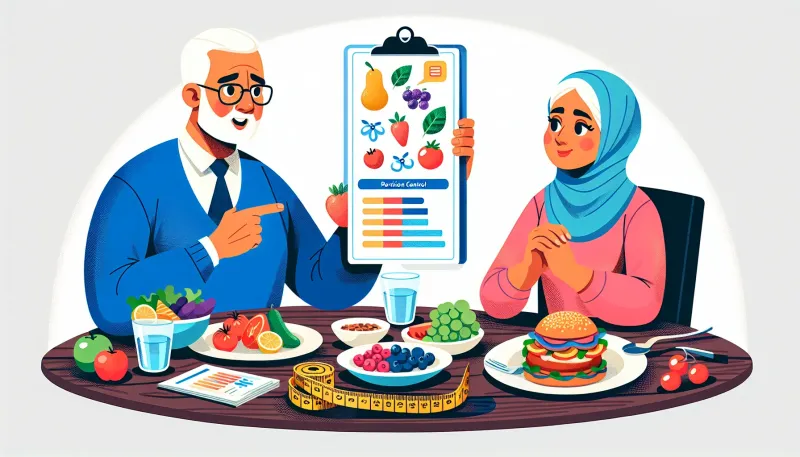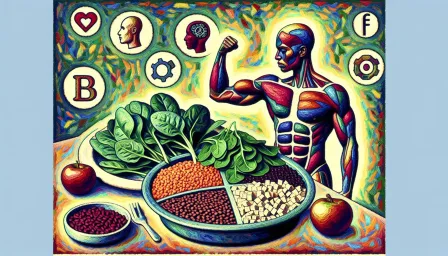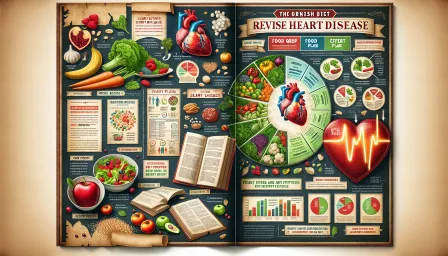Top Tips on Portion Control for Seniors: Ensuring Healthy Eating Habits

Discover expert tips on portion control for seniors, ensuring healthy eating habits and optimal nutrition for older adults. Learn practical strategies for managing portion sizes and improving overall wellbeing.
Maintaining a balanced diet is crucial at any age, but it becomes especially important as we grow older. Portion control for seniors is a key aspect of healthy eating, helping to ensure that nutritional needs are met without overindulgence. With proper portion management, seniors can avoid common health issues such as obesity, heart disease, and diabetes. In this article, we will explore top tips on portion control tailored specifically for older adults.
Understanding the Importance of Portion Control
As metabolism slows down with age, the body's energy requirements decrease. However, the need for essential nutrients remains the same, if not higher. Controlling portion sizes can help seniors maintain a healthy weight, support digestion, and improve overall quality of life. Here's why portion control is particularly vital for seniors:
- Weight Management: Proper portion sizes prevent weight gain and obesity, which are risk factors for many age-related diseases.
- Digestive Health: Smaller, balanced meals can enhance digestion and prevent discomfort caused by overeating.
- Blood Sugar Control: Managing portion sizes helps in regulating blood sugar levels, crucial for preventing and managing diabetes.
Practical Tips for Portion Control
1. Use Smaller Plates and Bowls
One of the simplest yet effective strategies for controlling portions is to use smaller plates and bowls. This creates the illusion of a fuller plate, helping to reduce the likelihood of overeating. Opt for a salad plate instead of a dinner plate and use smaller bowls for soups and cereals.
2. Measure Portions
Using measuring cups and spoons can be an excellent way to ensure you’re serving the right amount of food. Familiarize yourself with standard portion sizes for different food groups, such as a half-cup of cooked vegetables or a 3-ounce serving of protein.
3. Mindful Eating
Encourage mindful eating by taking the time to savor each bite. Eat slowly and chew thoroughly, which not only aids digestion but also helps recognize the body's satiety cues. Avoid distractions like television or smartphones during meals to focus on the eating experience.
4. Plan Balanced Meals
Planning meals with a balance of proteins, carbohydrates, and fats can help manage portion sizes effectively. Include a variety of fruits, vegetables, lean proteins, and whole grains. Use the MyPlate method as a guideline to ensure proper portions.
5. Snack Wisely
Healthy snacking can help control hunger between meals, reducing the temptation to overeat during main meals. Opt for nutrient-dense snacks like fruit, yogurt, or nuts instead of high-calorie, low-nutrient options.
Addressing Common Challenges
1. Dining Out
Eating out can be challenging for portion control as restaurant servings are often larger than home-cooked meals. Consider sharing an entrée, ordering a half-portion, or boxing half of your meal to take home. Avoid the bread basket and focus on a balanced main course and side salads.
2. Social Gatherings
Social events often revolve around food, making portion control difficult. Before attending, eat a small, balanced snack to curb hunger. At the event, choose smaller portions, and prioritize healthier options such as vegetables and lean proteins.
3. Emotional Eating
Many seniors may find themselves eating out of boredom or loneliness. Identifying emotional eating triggers and finding alternative activities, such as walking or engaging in hobbies, can help limit unnecessary snacking.
Implementing Portion Control for Specific Dietary Needs
Seniors often have unique dietary requirements, such as low sodium, low sugar, or low cholesterol diets. Here’s how to adapt portion control to meet these specific needs:
1. Low Sodium Diet
For a low sodium diet, focus on fresh, whole foods and avoid processed items that contain added salt. Use herbs and spices to flavor meals instead of salt and control portion sizes of sodium-rich foods.
2. Low Sugar Diet
Monitor portion sizes of sugary foods and beverages. Opt for fruits instead of sweets for a nutrient-rich, natural sugar fix. Read labels to identify hidden sugars in processed foods and manage portions accordingly.
3. Low Cholesterol Diet
Limit portions of high-cholesterol foods like red meat and full-fat dairy products. Increase portions of fiber-rich foods such as fruits, vegetables, and whole grains, which can help manage cholesterol levels.
Conclusion
Portion control for seniors is an essential component of maintaining a healthy lifestyle and preventing age-related health issues. By implementing the strategies discussed above, older adults can ensure they are getting the right nutrients in the right amounts without overindulgence. Remember, the goal is to enjoy a variety of foods in moderation, promoting overall wellbeing and longevity. Consult with a healthcare provider or a registered dietitian for personalized guidance on portion control and dietary needs.



























